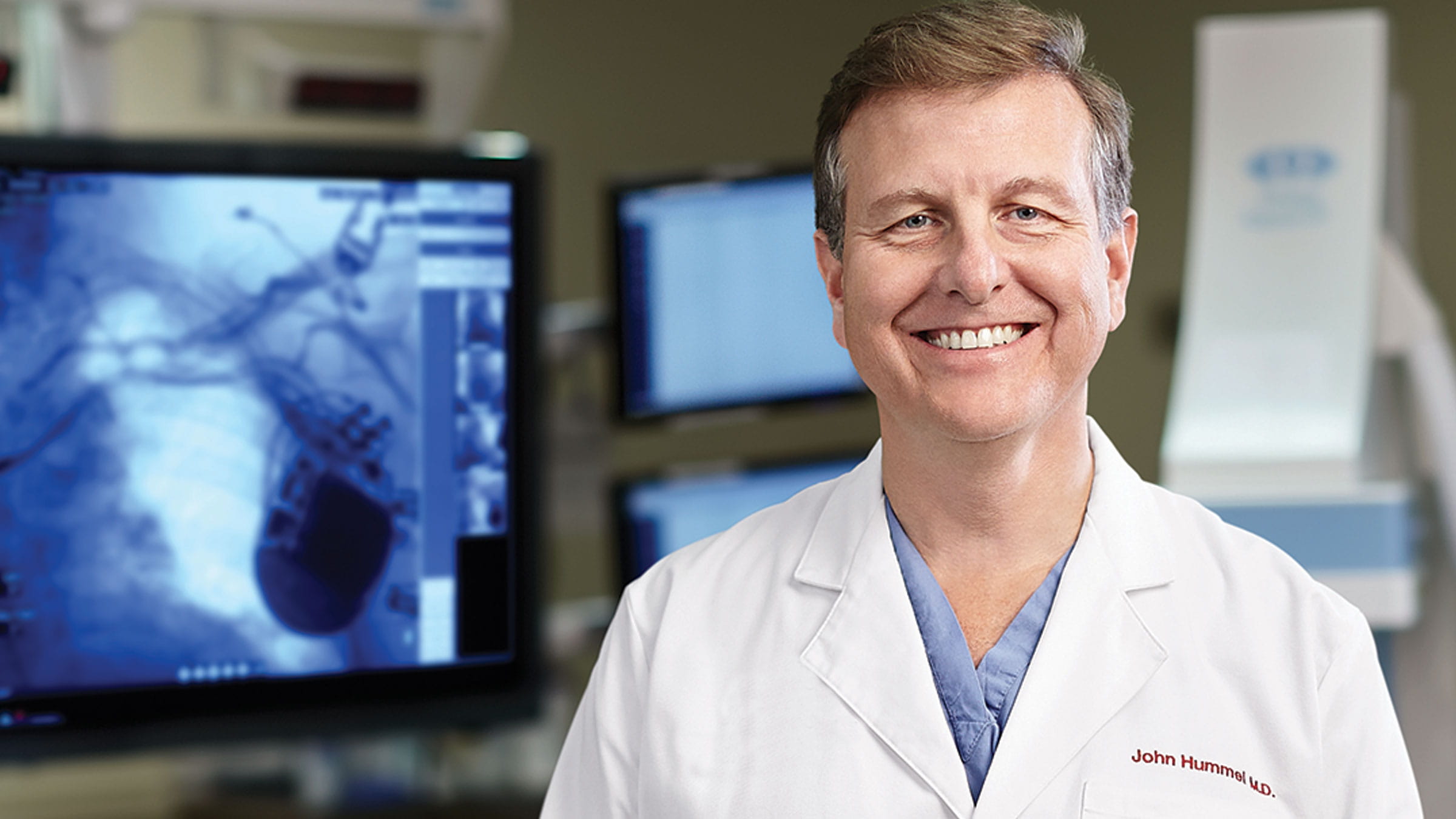
- Question What is atrial fibrillation?
-
Answer
Atrial fibrillation, commonly referred to as AFib, is a rapid, irregular heartbeat originating from the upper chambers of the heart called the atria. When not treated, it can cause blood clots, stroke and heart failure. Atrial fibrillation is the most common type of irregular heart rhythm (arrhythmia), affecting six million Americans.
- Question What causes atrial fibrillation?
-
Answer
Sometimes the cause is the result of damage to the heart’s electrical system by a coronary event like a heart attack or from conditions like coronary artery disease or high blood pressure. In other situations, the cause of atrial fibrillation is unknown.
- Question What can trigger atrial fibrillation?
-
Answer
There are a number of factors that can trigger atrial fibrillation, including high blood pressure, diabetes, sleep apnea, heart valve disease, severe lung disease and excessive alcohol intake.
- Question What does atrial fibrillation feel like?
- Answer
- Question What is paroxysmal atrial fibrillation?
-
Answer
Paroxysmal atrial fibrillation describes an occasional episode that stops on its own within seven days without any treatment. Many cases are clinically stable, but more serious cases can lead to heart failure or stroke.
- Question How is atrial fibrillation treated?
-
Answer
Atrial fibrillation is treated with drugs (blood thinner and beta blockers), an electrical shock procedure called cardioversion and a minimally invasive surgery called ablation. Ablation uses radiofrequency energy to create a small scar on an area of heart tissue. With this technology, clinicians can interrupt the electrical signals that cause irregular heartbeats.
- Question What are re-entrant drivers?
-
Answer
These are small sites outside of the pulmonary veins (where atrial fibrillation often originates) where, using advanced camera technology at Ohio State, we can observe the abnormal electrical activity that sustains atrial fibrillation. Re-entrant drivers often look like little tornados of electric activity.
- Question How is Ohio State advancing care for patients with AFib?
-
Answer
Using our advanced imaging system to study electrical activity in the heart, we have access to more information than ever before about the heart’s structure and electrical function. Most importantly, we have information about the re-entrant drivers that sustain atrial fibrillation. By discovering locations of re-entrant drivers, we’re able to better identify targets for ablation. As a result, the patients we treat using this technology have treatment success rates of 75-78% a year and a half after their ablations, compared to the national average of 40-60%.

Take charge of your heart health
Learn more about the causes of atrial fibrillation (AFib) and treatment options available at Ohio State.
Take charge today




